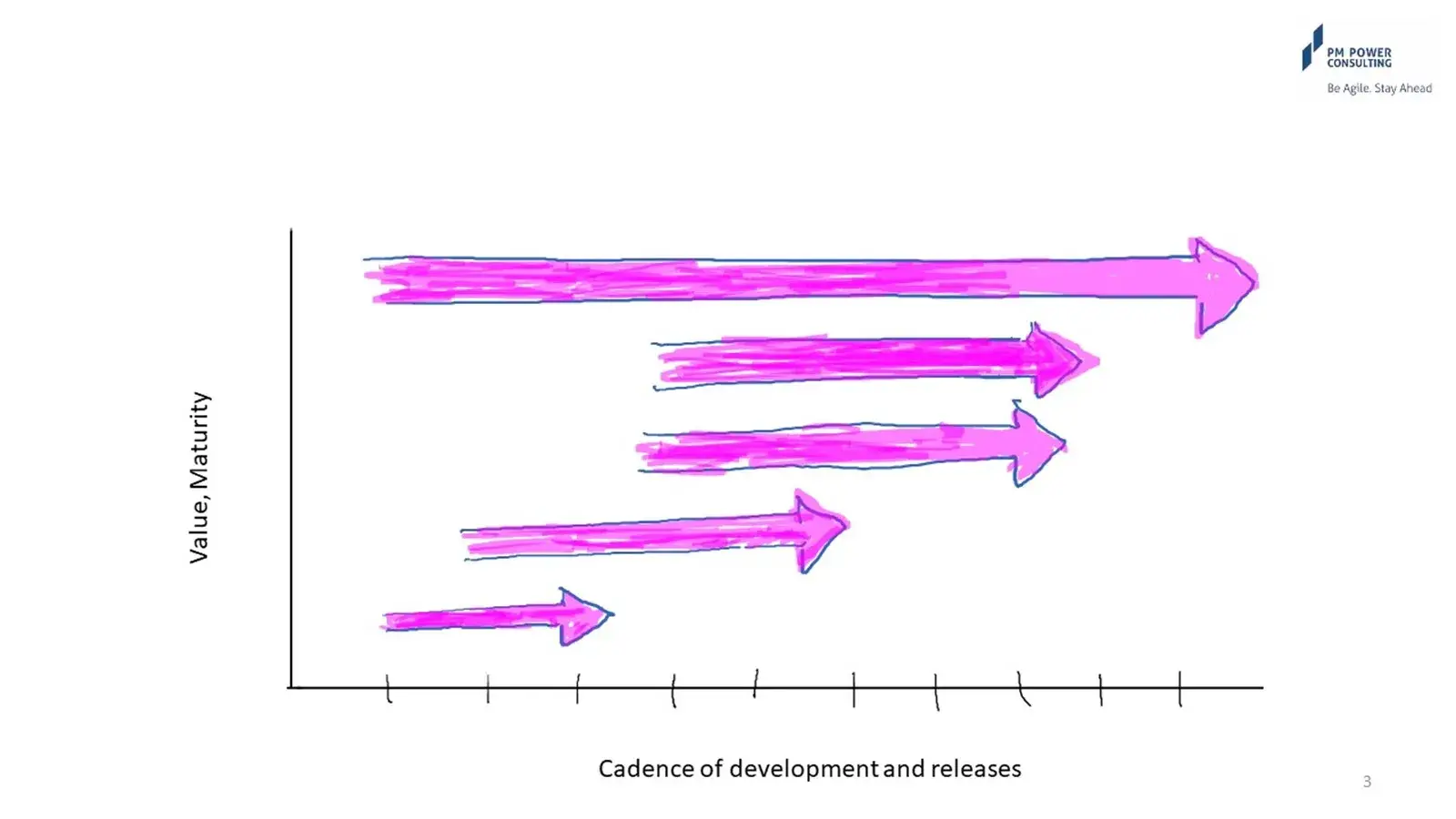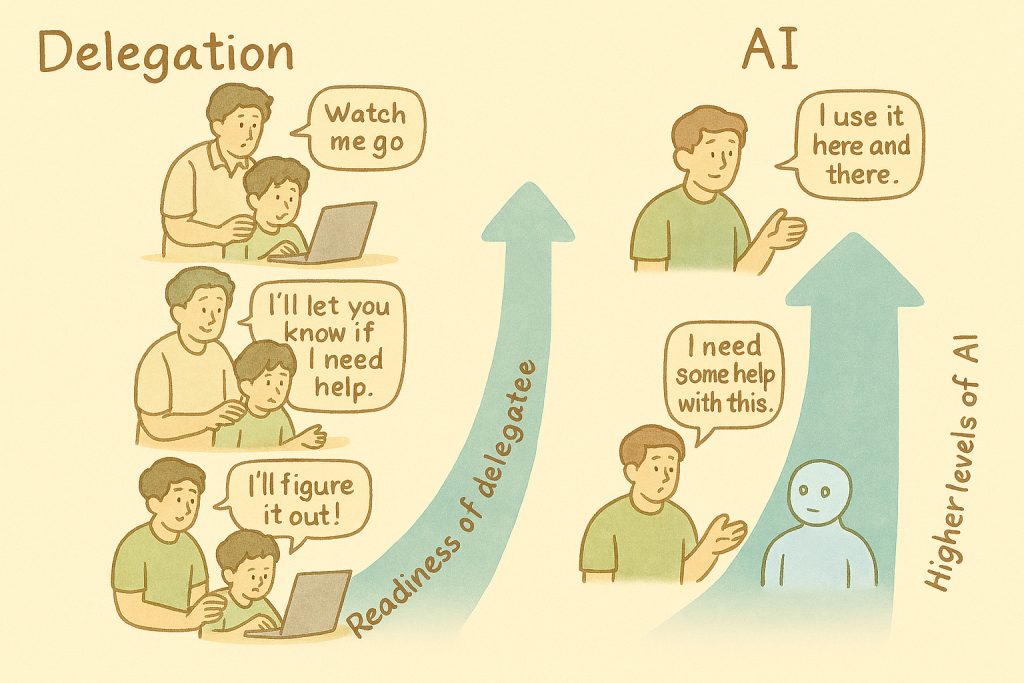Victor seemed to be immersed with some chart on his desk and fully focused on that, when Bardhan walked in.
Bardhan saw some parallel arrows drawn on the chart and the axes marked as Value, Maturity on the Y dimension and Cadence of development and releases on the X dimension.
Curious, he asked Victor what it was.
Victor said that this was a picture he had noted down from a recent coaching session on bringing in some refinements and improvements in his team. He also had some labels on the page [see below] but had forgotten which label is related to which row.
Wow, said Bardhan. This is a good puzzle to solve, right after lunch! But, tell me, Victor, do you remember any other messages from the session, that would give us some clues?
Victor thought about it and said that I vaguely remember something like this. I had noted a few points, but had paraphrased what I heard in my own words. I forgot to attach them to these arrows.
The team needs to embrace the culture of the to-be state in order for anything else to work.
We should be starting with a clear purpose and everyone should know their own responsibilities as individuals as well as how they would work as a team.
They should also be clear about how they will work as a team, with appropriate norms and have a clear idea of how to plan and manage their work together.
With that clarity, they can then start experimenting and exploring good engineering practices and focus on the product quality – or, in other words, the quality of the workproducts created by the team.
The fifth theme was the culture of empiricism and using data for learning and planning [as well as tracking].
All these, while parallel, have some time lag or sequencing, to ensure that we can build on the earlier themes, that will help sustain the improvements.
Can you help Victor and Bardhan complete the picture below?
Suggested Solution:
Solve the picture puzzle below. Drag the labels to the respective arrows and check your answer. If you get something wrong, you can try again.






4 Responses
Hi Shiv, I can relate to this, it is a real different world.
I was invited a few times to address students appearing for CET exams as an industry person and found it challenging to connect with them. I was able to connect somewhat as one of their concern was what if they do not get into a good college, which I was able to address by sharing real life examples.
Thanks Vasu. College “brand” no doubt helps early on in work life – corporate doors open more easily. But down the line, it is people’s motivation and track record that helps build careers. I am sure we have all seen examples affirming this. I have stressed with the mentees that I work with. An aside, the mentorship program I am involved in spans 4-5 months and so, I have had time to work on the “connect”! Yes – takes time and effort.
Hi Shiv – very well written – thanks for the write-up.
Many years ago I was a volunteer mentor for a couple of youth as part of Dream A Dream’s life skills mentoring program. This was in person mentoring where the mentee and I would meet periodically (usually on a weekend) and discuss general topics. There was no prescribed structure though all mentors did go thru a few hours of in person training. Based on that experience I can corroborate that it takes time for the mentee to open up, especially in that case given their lack of confidence in expressing in English which was the recommended language for communication. Switching to Tamil (in one case where the mentee was from Tamil Nadu) helped.
Can also relate well to your point on swings in mood and engagement level of the mentee and the need for mentor to shift gears accordingly.
I am sure the mentees are benefiting a lot from your vast and varied experience – hope you will come back to mentor more such students after you complete the current mentorships and possibly take a break!
Thank you, Bhasker!